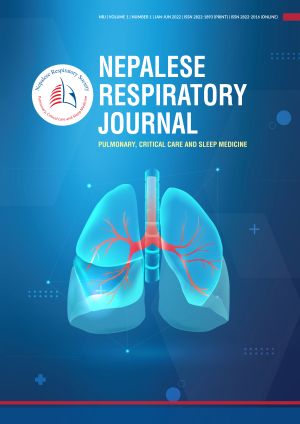Allergic sensitization and obstructive airway diseases among an adult rural population in Nepal
DOI:
https://doi.org/10.3126/nrj.v1i1.45232Keywords:
Allergy, Bronchial asthma, COPD, NepalAbstract
Background: The relevance of the obstructive lung diseases asthma and COPD and IgE-mediated allergy in Nepal is still poorly characterized.
Method: In a cross-sectional study in rural Nepal 199 persons were characterized with a questionnaire, skin prick tests, spirometry and total IgE concentration in serum.
Results: About 20% of the women and 50% of the men were current smokers. Half of the study population used biomass fuel at home to cook or to heat and 70% of the study participants experienced dust-exposure at work or at home. 50% of the women and 30% of the men had a history of COPD, while 57% of the women and 53% of the men had symptoms of respiratory allergy. 18% of the women and 16% of the men used inhaler devices. 62% of the women and 66% of the men had a total IgE concentration in serum >100 IU/mL. About 30% of the women had a FEV1 < 80% and about 10 % had a FEV1 < 40%, also 30% of the men had a FEV1 <80% but none of the men had a FEV1 <40%. The FEV1/VC ratio was smaller than 70% in 13 % of the women and 14,6% of the men. We observed a significant inverse correlation between serum IgE with FEV1. 14% of study participants had positive prick test for house dust mite, 5% were positive for cat dander and 3% were positive for mugwort.
Conclusion: In summary this study shows an relevant burden of obstructive pulmonary disorders and IgE-mediated allergy in a rural Nepalese population.
Downloads
Downloads
Published
How to Cite
Issue
Section
License
This license enables reusers to distribute, remix, adapt, and build upon the material in any medium or format, so long as attribution is given to the creator. The license allows for commercial use.




